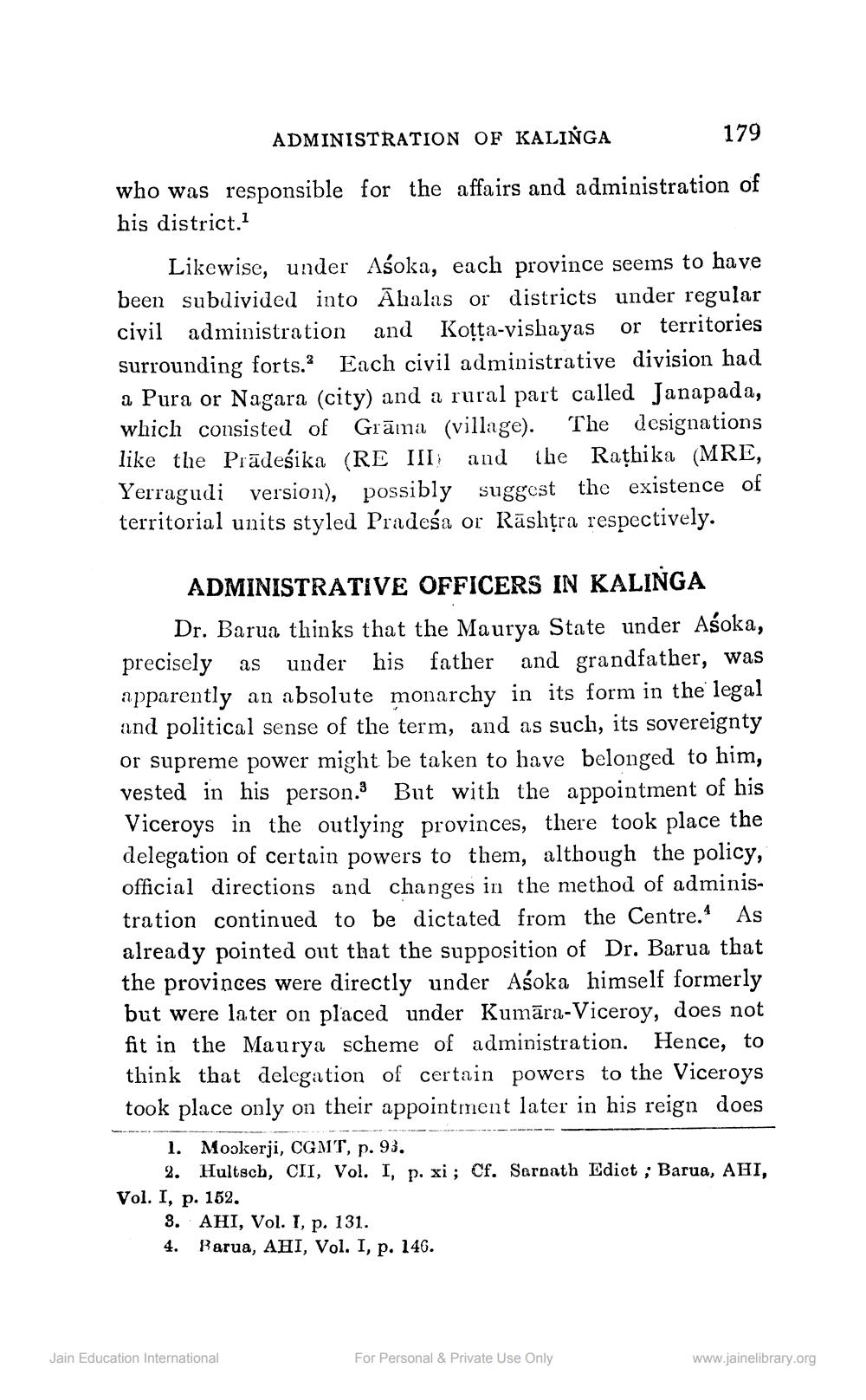________________
ADMINISTRATION OF KALINGA 179 who was responsible for the affairs and administration of his district.1
Likewise, under Asoka, each province seems to have been subdivided into Ahalas or districts under regular civil administration and Kotta-vishayas or territories surrounding forts. Each civil administrative division had a Pura or Nagara (city) and a rural part called Janapada, which consisted of Grāma (village). The designations like the Prādesika (RE III and the Rathika (MRE, Yerragudi version), possibly suggest the existence of territorial units styled Pradeśa or Rāshtra respectively.
ADMINISTRATIVE OFFICERS IN KALINGA
Dr. Barua thinks that the Maurya State under Asoka, precisely as under his father and grandfather, was apparently an absolute monarchy in its form in the legal and political sense of the term, and as such, its sovereignty or supreme power might be taken to have belonged to him, vested in his person. But with the appointment of his Viceroys in the outlying provinces, there took place the delegation of certain powers to them, although the policy, official directions and changes in the method of administration continued to be dictated from the Centre. As already pointed out that the supposition of Dr. Barua that the provinces were directly under Asoka himself formerly but were later on placed under Kumāra-Viceroy, does not fit in the Maurya scheme of administration. Hence, to think that delegation of certain powers to the Viceroys took place only on their appointment later in his reign does
1. Mookerji, CGMT, p. 93.
2. Hultsch, CII, Vol. I, p. xi; cf. Sarnath Edict ; Barua, AHI, Vol. I, p. 152.
3. AHI, Vol. I, p. 131. 4. Barua, AHI, Vol. I, p. 146.
Jain Education International
For Personal & Private Use Only
www.jainelibrary.org




